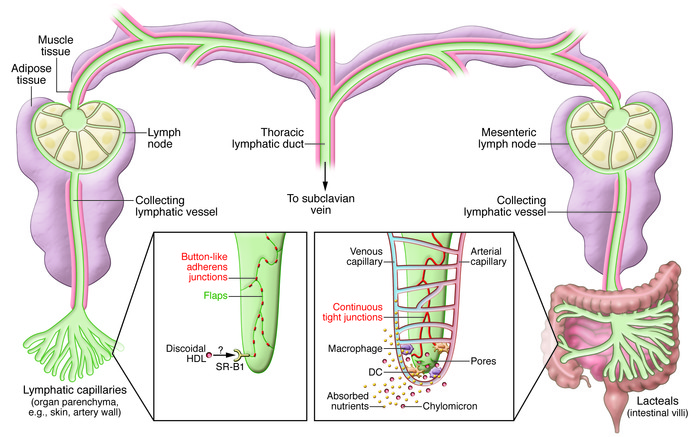Citation Information: J Clin Invest. 2014;124(3):929-935. https://doi.org/10.1172/JCI71610.
Abstract
The life cycles of VLDLs and most LDLs occur within plasma. By contrast, the role of HDLs in cholesterol transport from cells requires that they readily gain access to and function within interstitial fluid. Studies of lymph derived from skin, connective tissue, and adipose tissue have demonstrated that particles as large as HDLs require transport through lymphatics to return to the bloodstream during reverse cholesterol transport. Targeting HDL for therapeutic purposes will require understanding its biology in the extravascular compartment, within the interstitium and lymph, in health and disease, and we herein review the processes that mediate the transport of HDLs and chylomicrons through the lymphatic vasculature.
Authors
Gwendalyn J. Randolph, Norman E. Miller
Figure 1
Organization of the lymphatic vasculature.



Copyright © 2025 American Society for Clinical Investigation
ISSN: 0021-9738 (print), 1558-8238 (online)

